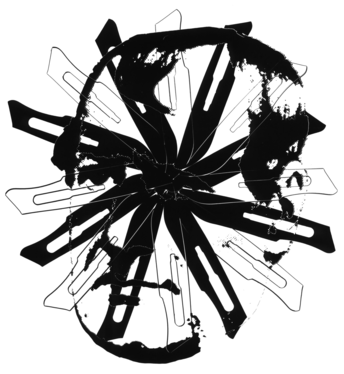Marie Jean Pierre Flourens1794–1867
Flourens was an admirer of Gall’s dissecting skills but a harsh critic of his phrenology, both in terms of its psychological speculations and its support of cortical localization based on anecodotal and clinical observation. In the preface to his examination of phrenology Flourens makes his position clear: “I am writing in opposition to a bad philosophy, while I am endeavouring to recall a sound one”. Flourens provided experimental evidence questioning functional localization in the brain. The technique he applied was that of extirpation or ablation: the surgical removal of parts of the brain to examine how the remainder functioned by studying postoperative behaviour. This technique was not, of course, novel but Flourens’s investigations are taken as starting point for the modern era. His initial experiments, published in book form in 1824, examined extirpation of increasing parts of the cerebellum, which he found (as Rolando had before him) to be intricately involved in the control of posture. This led Flourens to examine the maintenance of balance in greater detail, and his lesions of the semicircular canals resulted in the first appreciation of the function they served. Flourens’s most productive period was in the 1820s with his experiments on reptiles, birds, and mammals; he rarely made distinctions between the brains of these animals. His principal conclusions were: “1. Despite the diversity of action of each of its parts, the whole nervous system is still a particular system; 2. Independently of the proper action of each part, each part has a common action with all the others, as have all the others with it”. Thus, he viewed the brain as having some degree of localized function, but that it acted as a unit. Indeed, one of his great discoveries was that the control of respiration resided in the medulla oblongata. Flourens demonstrated that there is considerable plasticity in the cerebral cortex because deficits in behaviour caused by cortical lesions could recover. Since it was known that brain tissue did not regenerate, this was taken to be evidence that the same functions can be controlled by different parts of the brain. Moreover, the extent of behavioural deficit was related to the amount of brain lesioned. Gall criticized the extirpation experiments on the grounds that the “deeper and deeper slices” would have severed many cortical and subcortical pathways. Another possible explanation for the results leading Flourens to his equipotentiality theory is based on the extent to which the functional deficits of his ablation experiments were worsened by surgical trauma and particularly by brain oedema. Criticism of Flourens’s theory also came from clinicians. It was well founded and the ascendancy of Flourens’s equipotential views was short-lived (although it resurfaced in later holistic views of brain functions, and particularly in the reticular conception of the Italian anatomist Golgi. Flourens was born in southern France and received his medical training at Montpellier. He then moved to Paris where he was initially an assistant in the Collège de France and eventually became Professor. In 1833 he was appointed permanent secretary of the Académie des Sciences and in 1840 he joined the “Les Immortels” with his election to the Académie Française. Later in life he was noted for his brief biographies of eminent scientists. Flourens’s portrait is combined with the blades he wielded with such precision in conducting experiments on extirpation. “My method consisted in first uncovering the entire brain, and second, looking in this way at the limits of each part, guiding the hand always by the eye, and never making lesions which would cut across the proper limits of each distinct part. In a word, in examining, testing, interrogating one part after another, and always apart from the others.”
